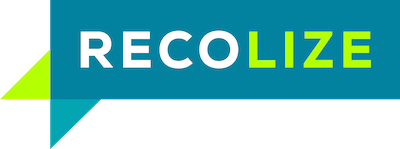Personalization techniques are trending these days and experts predict, that businesses will increase their profit by up to 15 % in a few years with the help of smart personalization. So let us take a short, highly subjective look into the near future of how personalization will look like in 2025.
“Personalization” will be used for simplicity reasons here as a general term for all kinds of individualization. For more information about the term see our blog post about “The Difference Between Recommendations and Personalization“.
Personalization Everywhere
By 2025 personalization will be everywhere around us. Thanks to ubiquitous computing every smartphone and watch, all our house hold devices (IoT), our cars, TVs and buildings will have integrated some kind of personalization algorithms. These will allow us to save an enormous amount of time choosing between different alternatives and will know us very well to make extremely accurate recommendations. And even execute them fully automatically, e.g. booking your next holiday trip, organizing your day, autonomously driving to the meeting with your friends on the fastest route and afterwards parking the car in an outside area to save parking costs and many more things where personal decisions will be done for you.
Today devices like Amazon Alexa or Google Home already allow us an insight into the possible future where we do not necessarily sit in front of our laptop and are shown some product recommendation carousels. Instead we talk to the “invisible, intelligent cloud” which is everywhere.
A Comprehensive Bulk of Data
Taking into account the countless number of devices gathering data that we will have in future thanks to the “Internet of Things” (IoT), the difficulty for personalization algorithms is to be as efficient as possible. Nowadays recommendation engines that use techniques like Collaborative Filtering or Machine Learning require complex calculations depending on the amount of data, like users, clicks, actions, purchases, that will drastically increase the more inputs we have.
So clever mathematicians and personalization experts are asked to find solutions to calculate the individual recommendations as quickly as possible without loosing accuracy.
Data to the User
Started with the GDPR in Europe, the future will bring even stricter privacy laws. In times where every device gathers and sends data to a confusingly high amount of services, it is essential that local governments protect the rights of each individual to remain the owner of the data. Distributed Ledger Technologies like Blockchain – which is famously known from the Bitcoin cryptocurrency – will allow the data to remain on the user side, while still having the possibility to feed them into recommendation engines to improve the decisions made by them.
Distributed Personalization
One solution for the privacy issue mentioned above could be some kind of what we call “Distributed Personalization”. In this scenario due to the ever-increasing computational power of single devices, more pre-calculations for the recommendations can be done on the client side, for example in your browser. This has the effect, that some of the computational-intense calculations are not centralized but parallelized across all different personalization users, which also optimizes the performance mentioned in the first paragraph.
What Should You Do Now?
You might think: “Sounds all great but what does this mean to me now?”. Of course this is just a highly subjective guessing into the future and it may and will look completely different.
But, the best thing you can do now is to start using these technologies and familiarize yourself with different personalization methods. Constant learning and improving will be one of the main assets in future for everyone.
With Software-as-a-Service tools like Recolize, the beginning is extremely easy and can be done within a few minutes. The Recolize personalization experts also increase your knowledge about the personalization domain free of charge.



